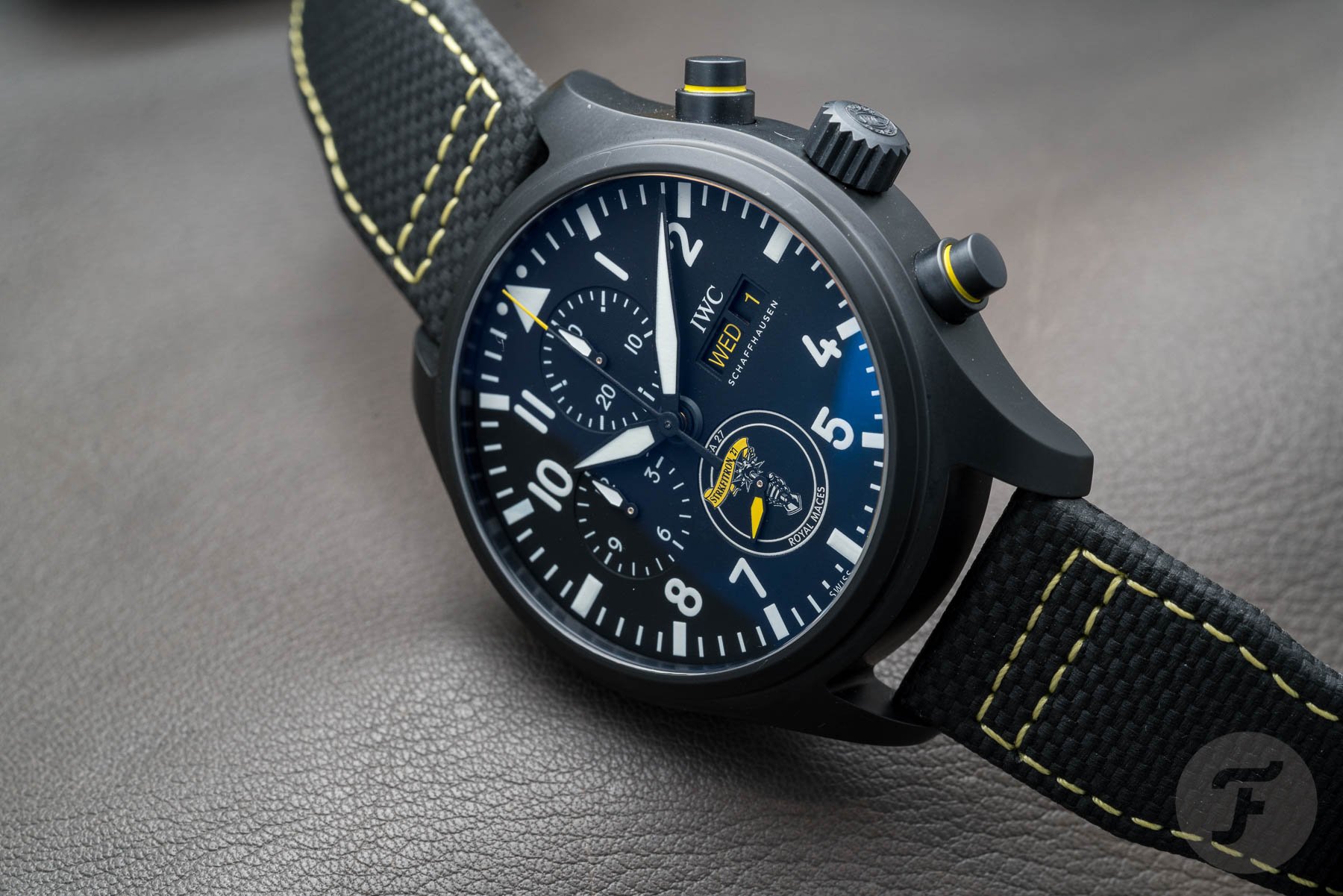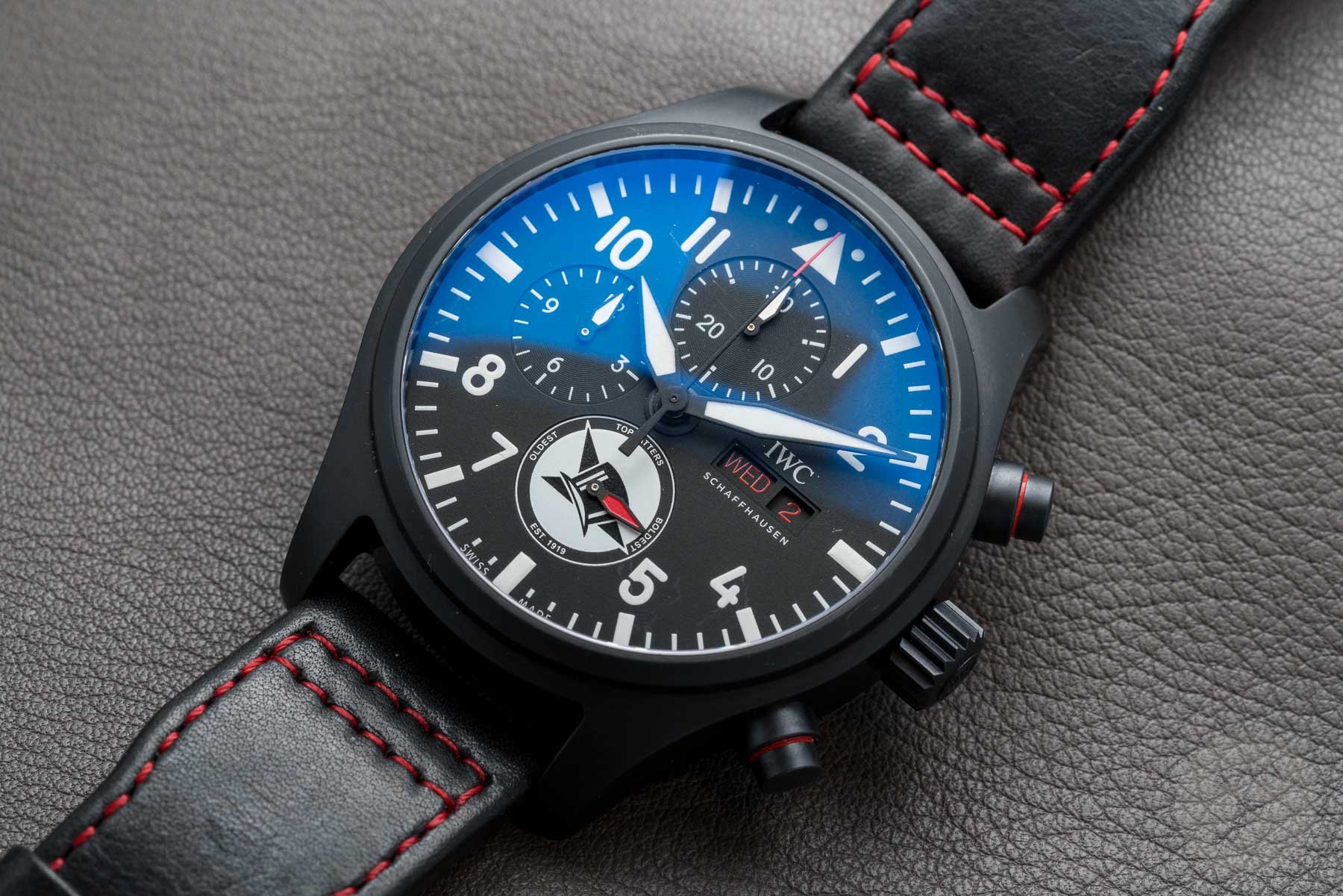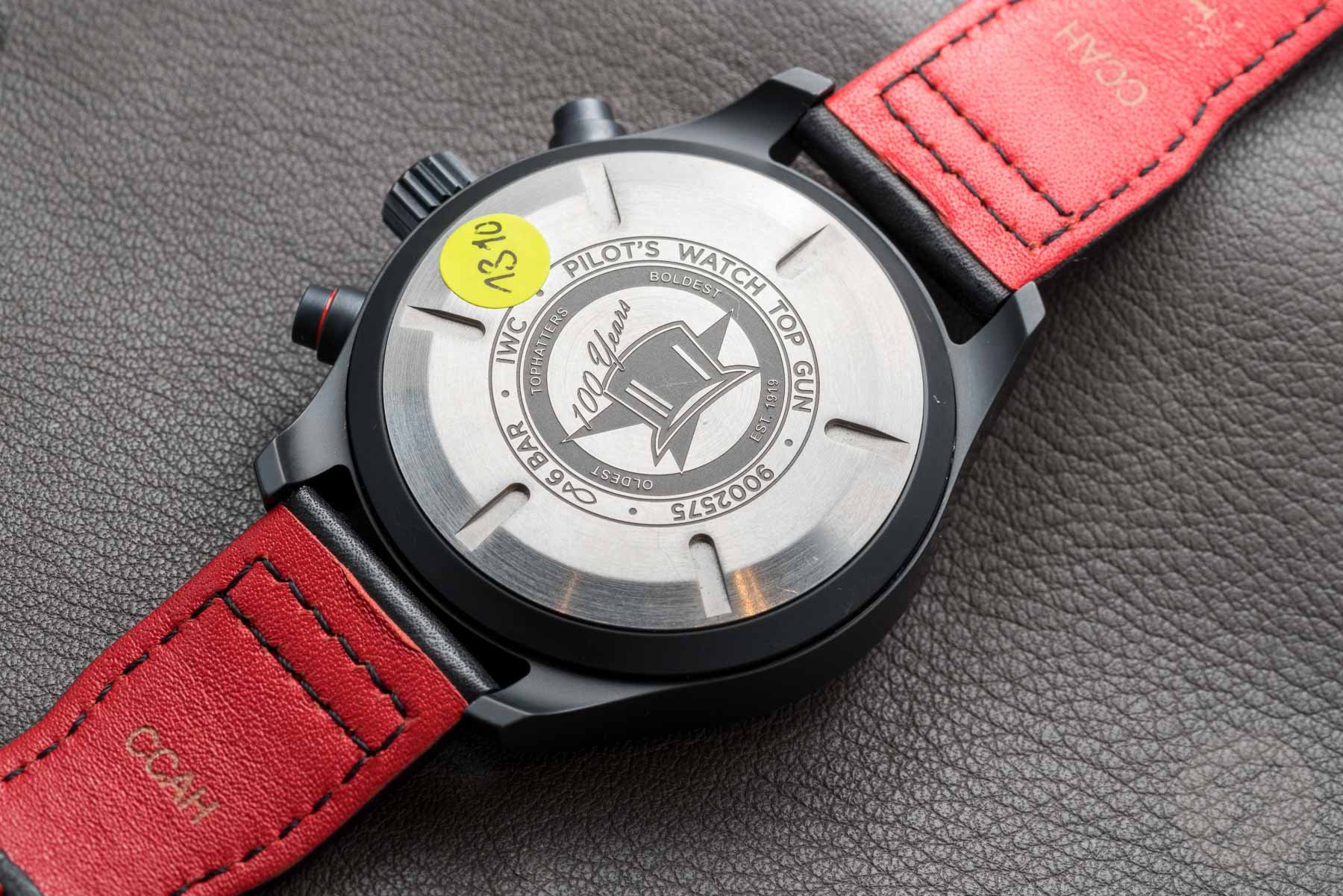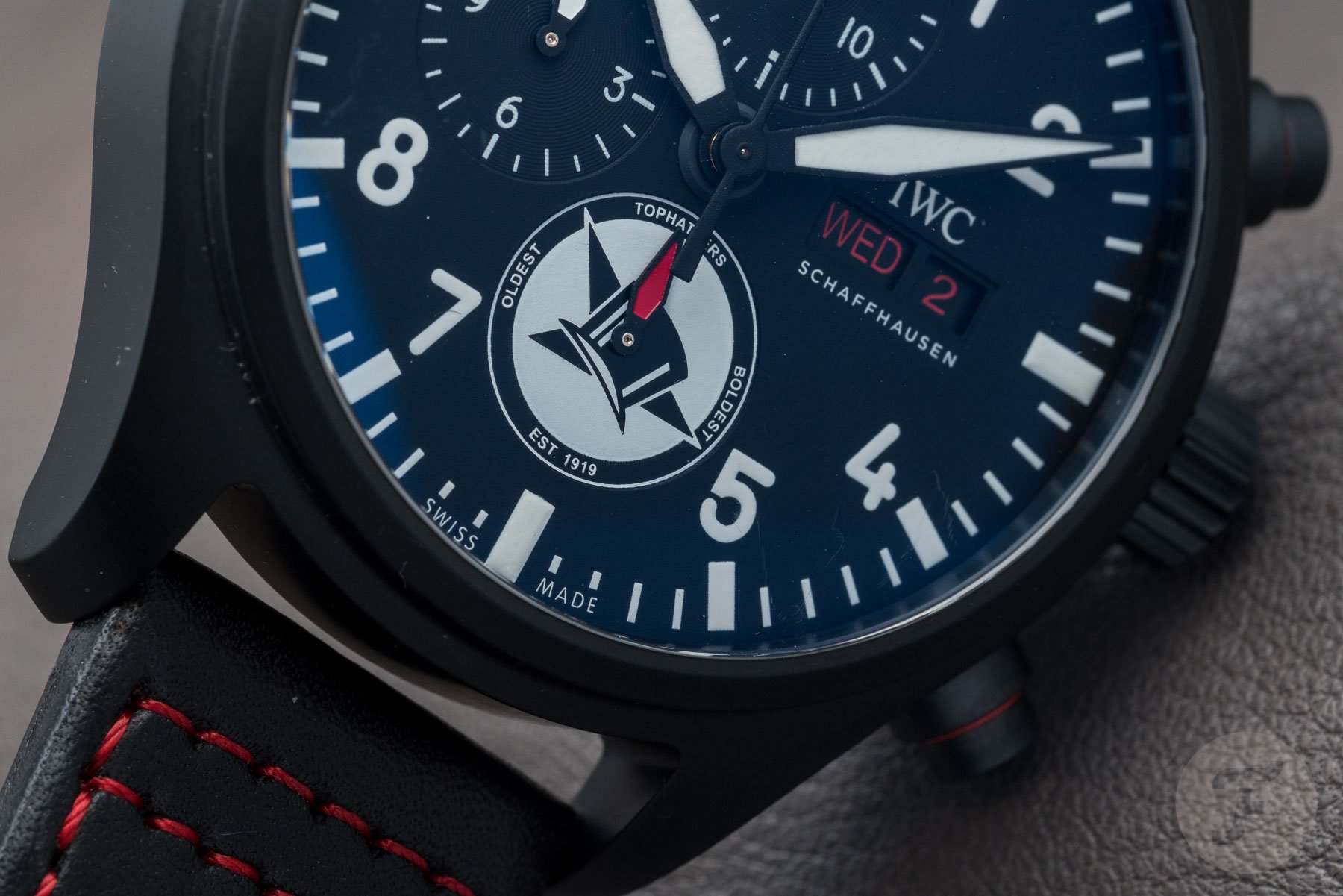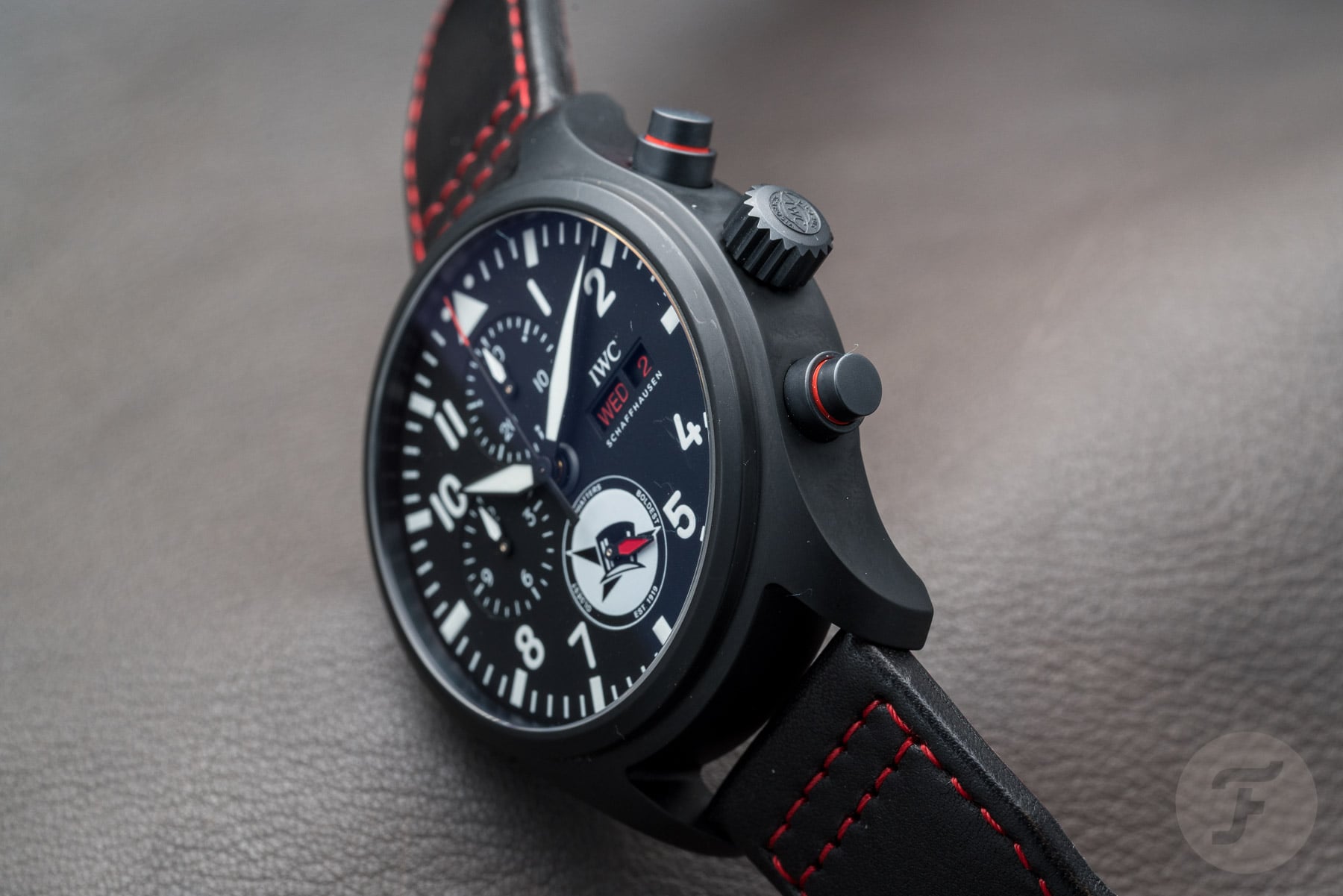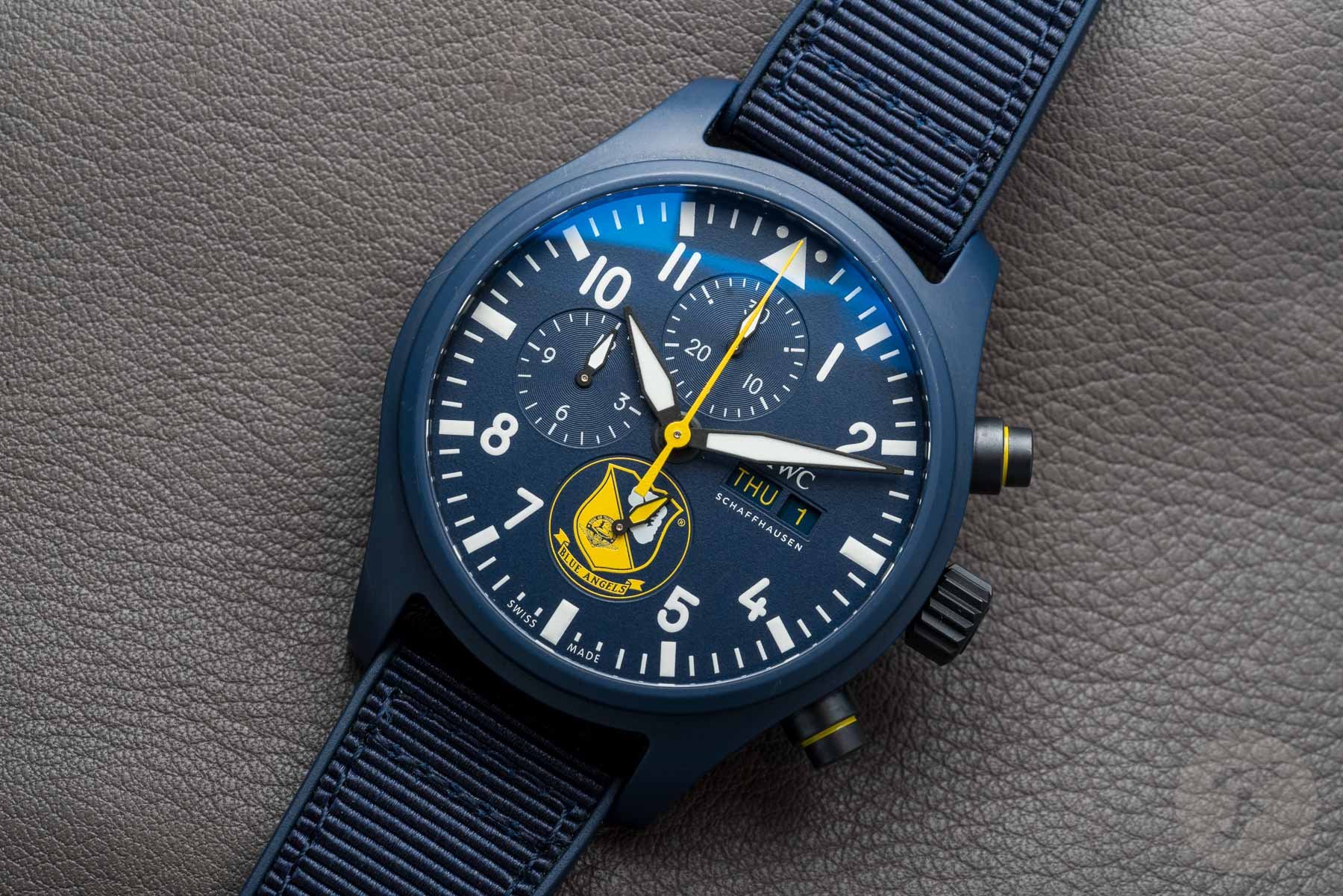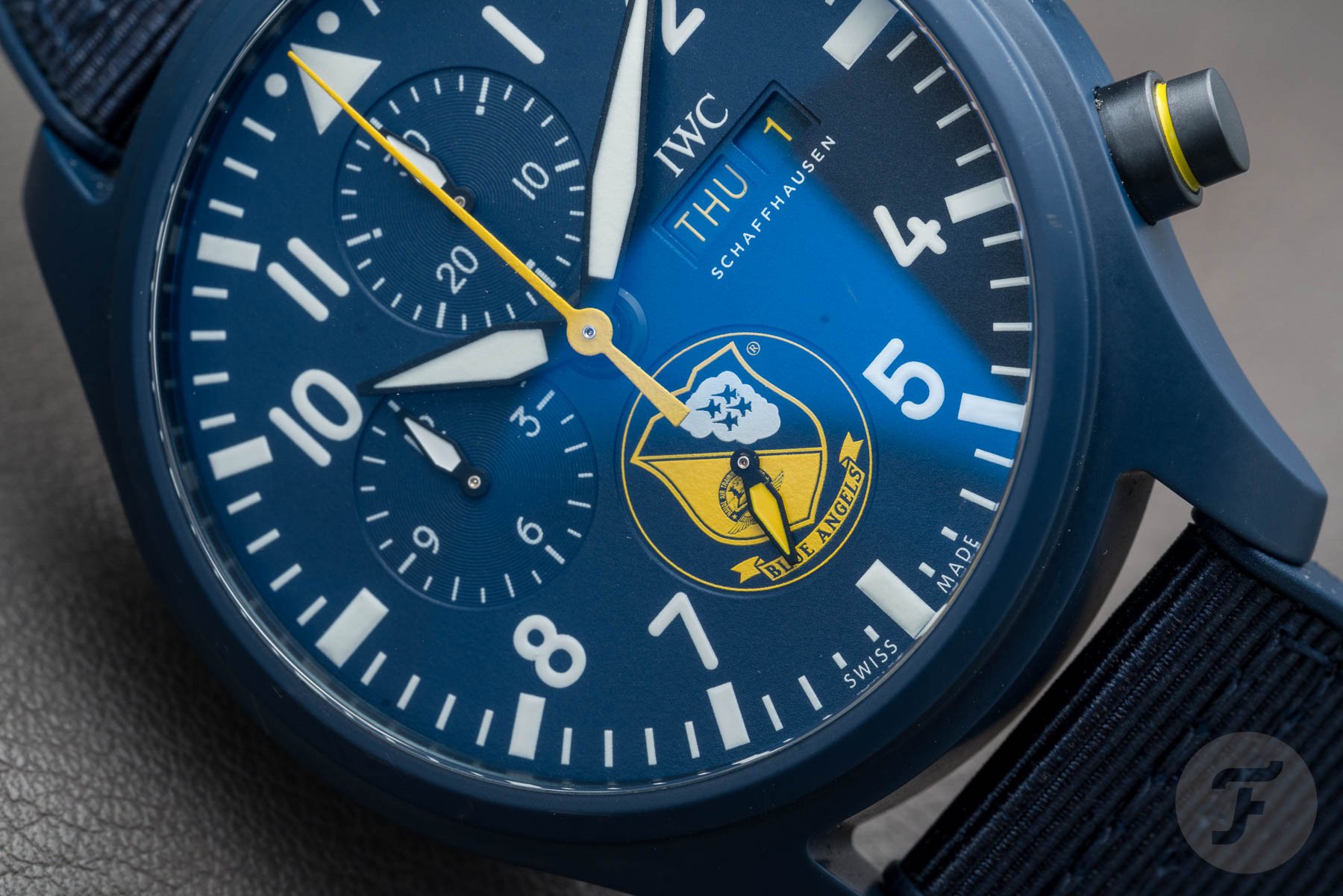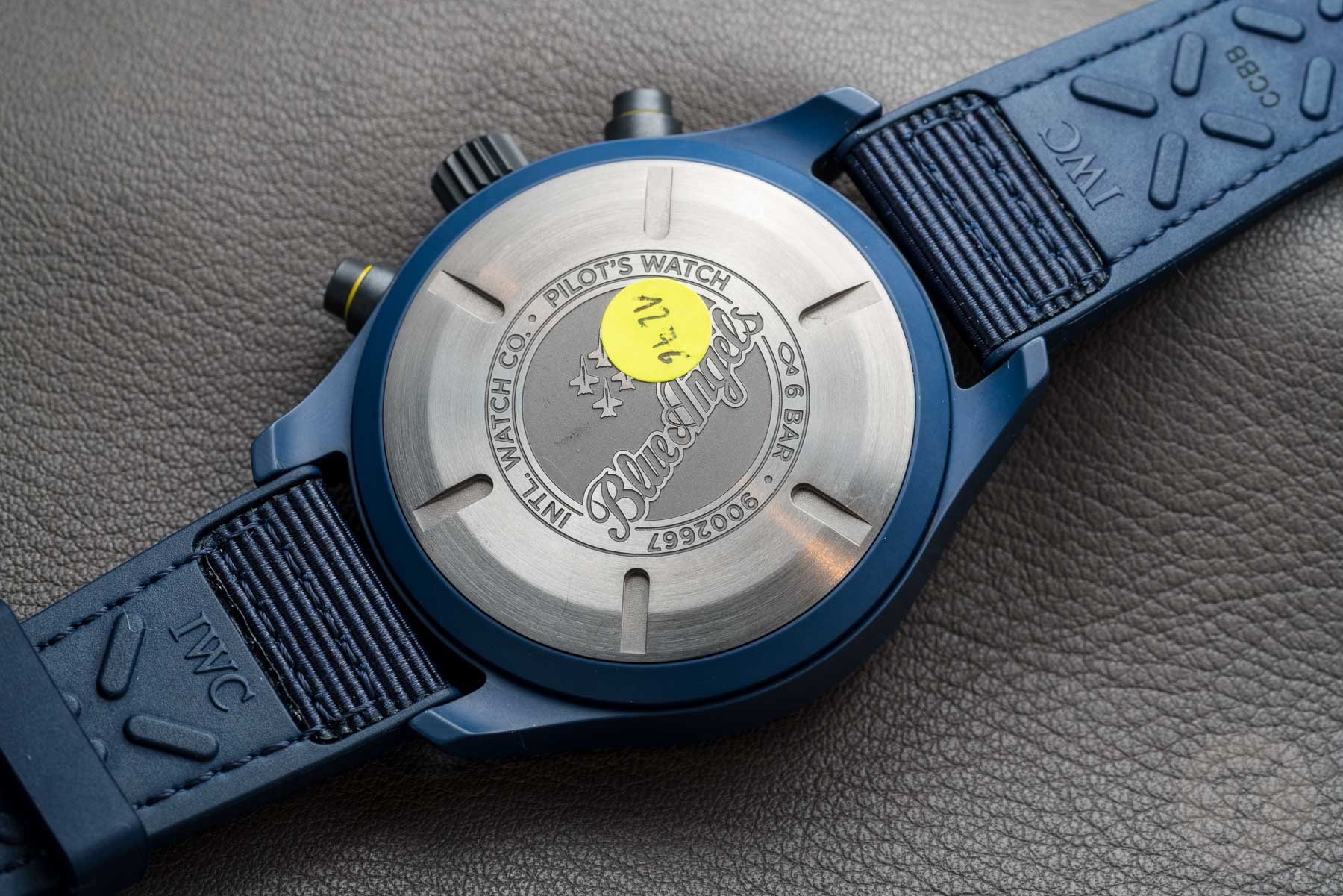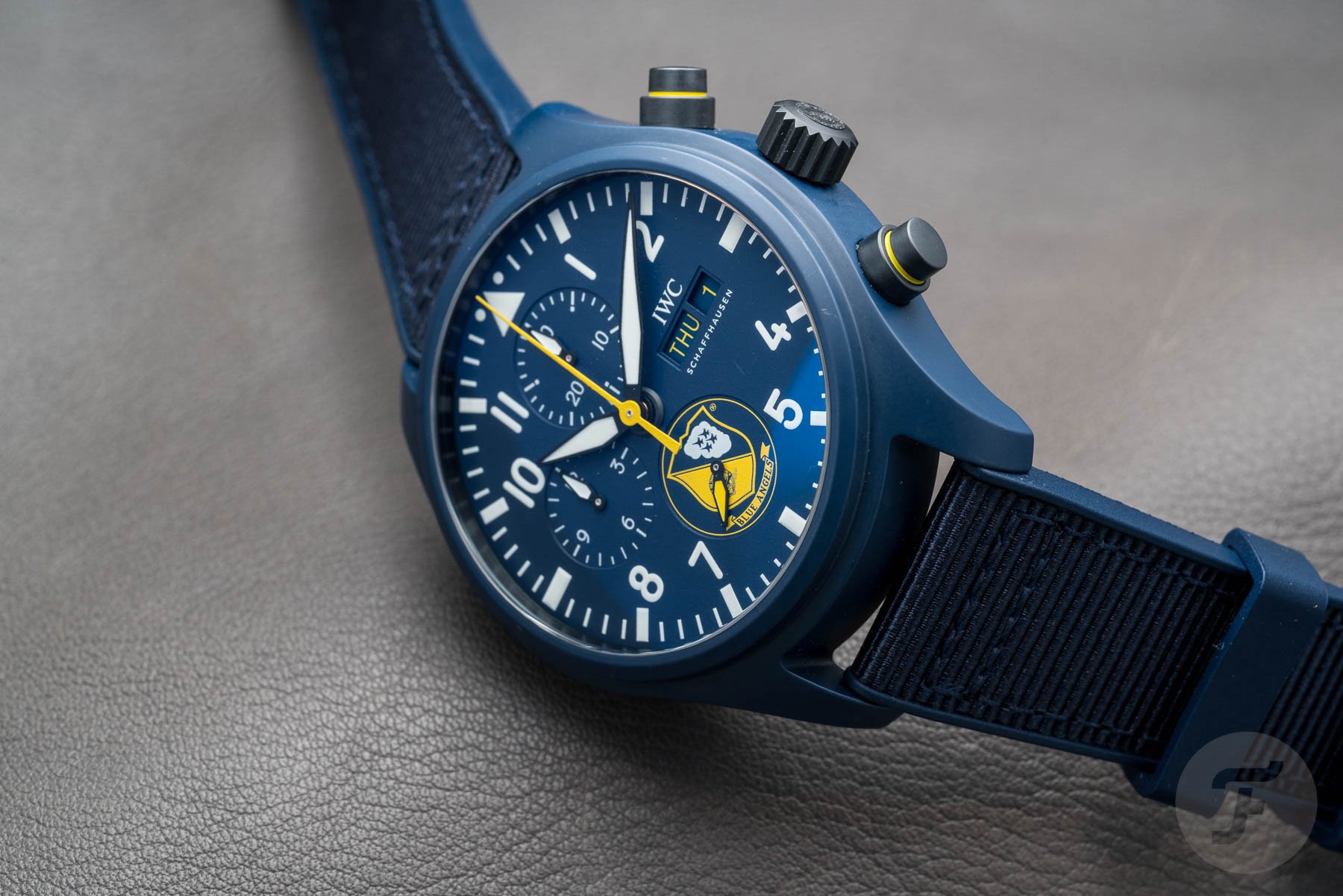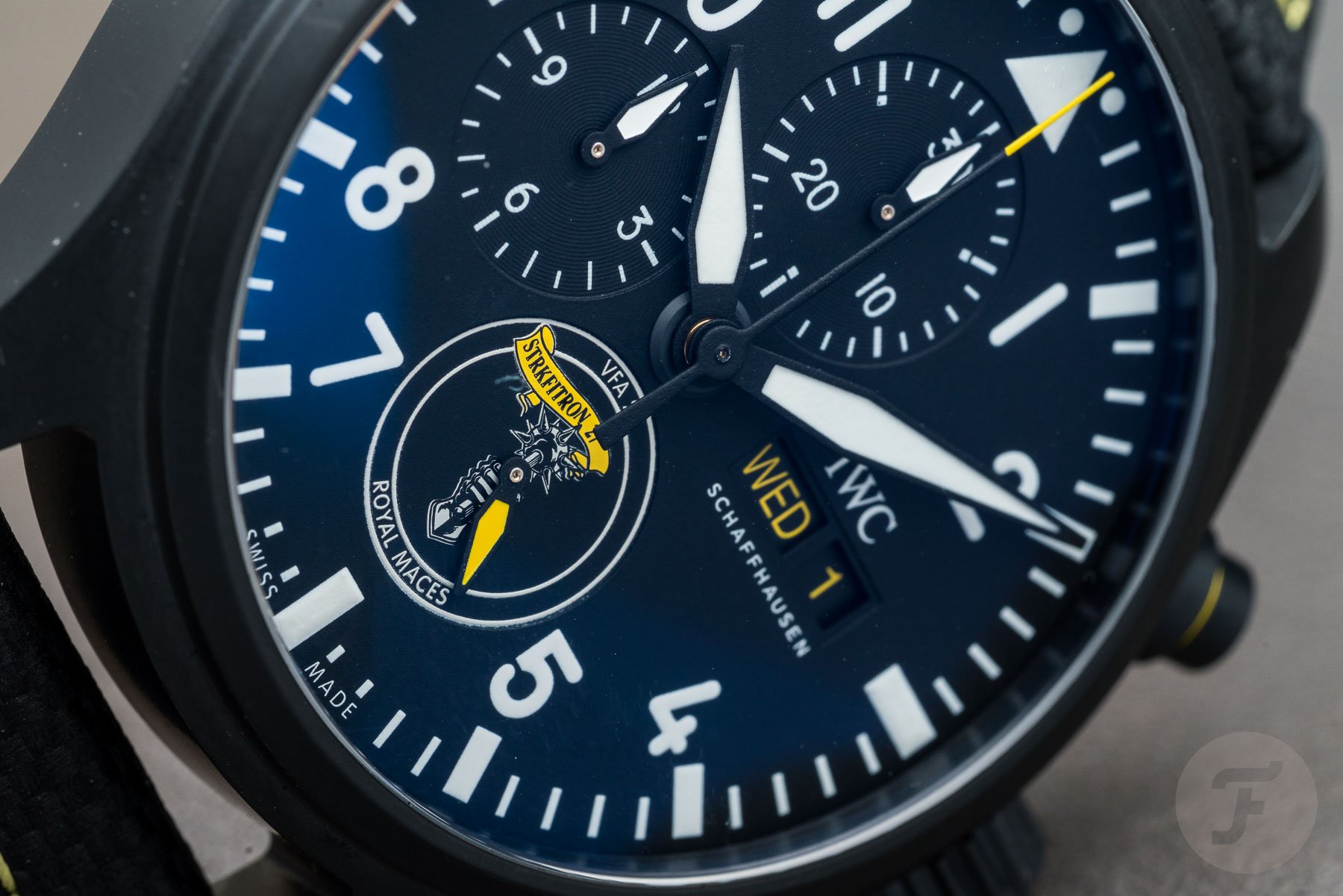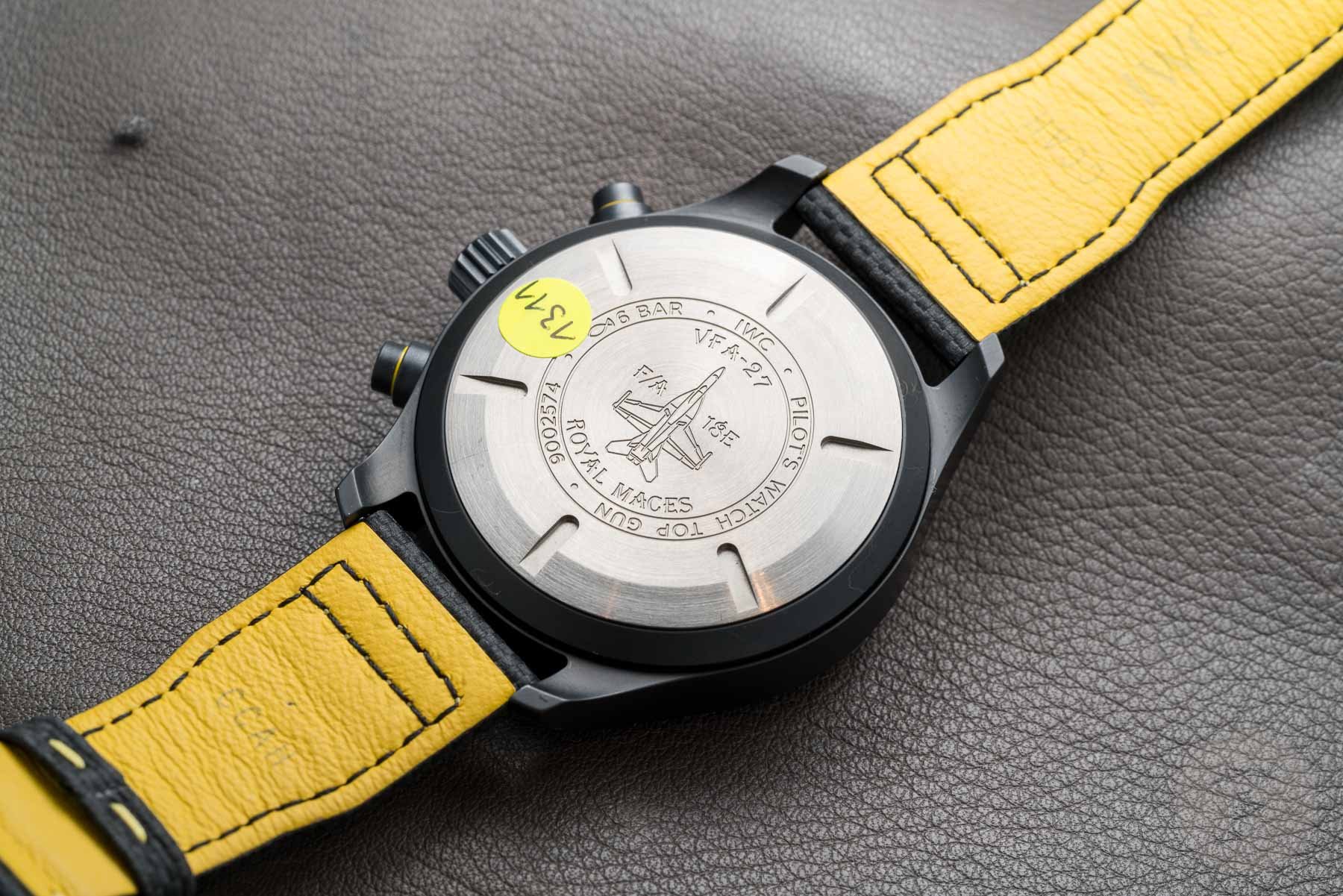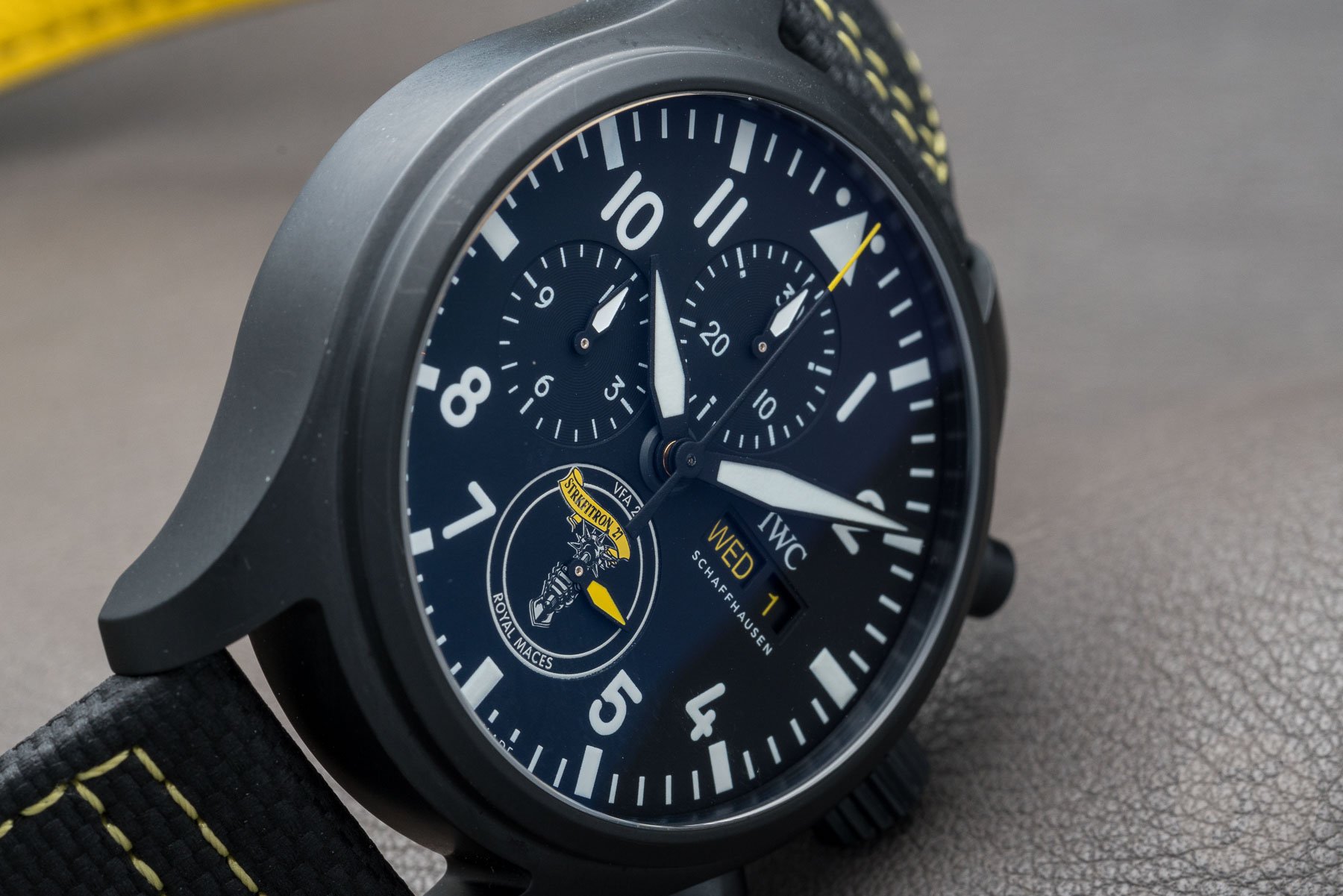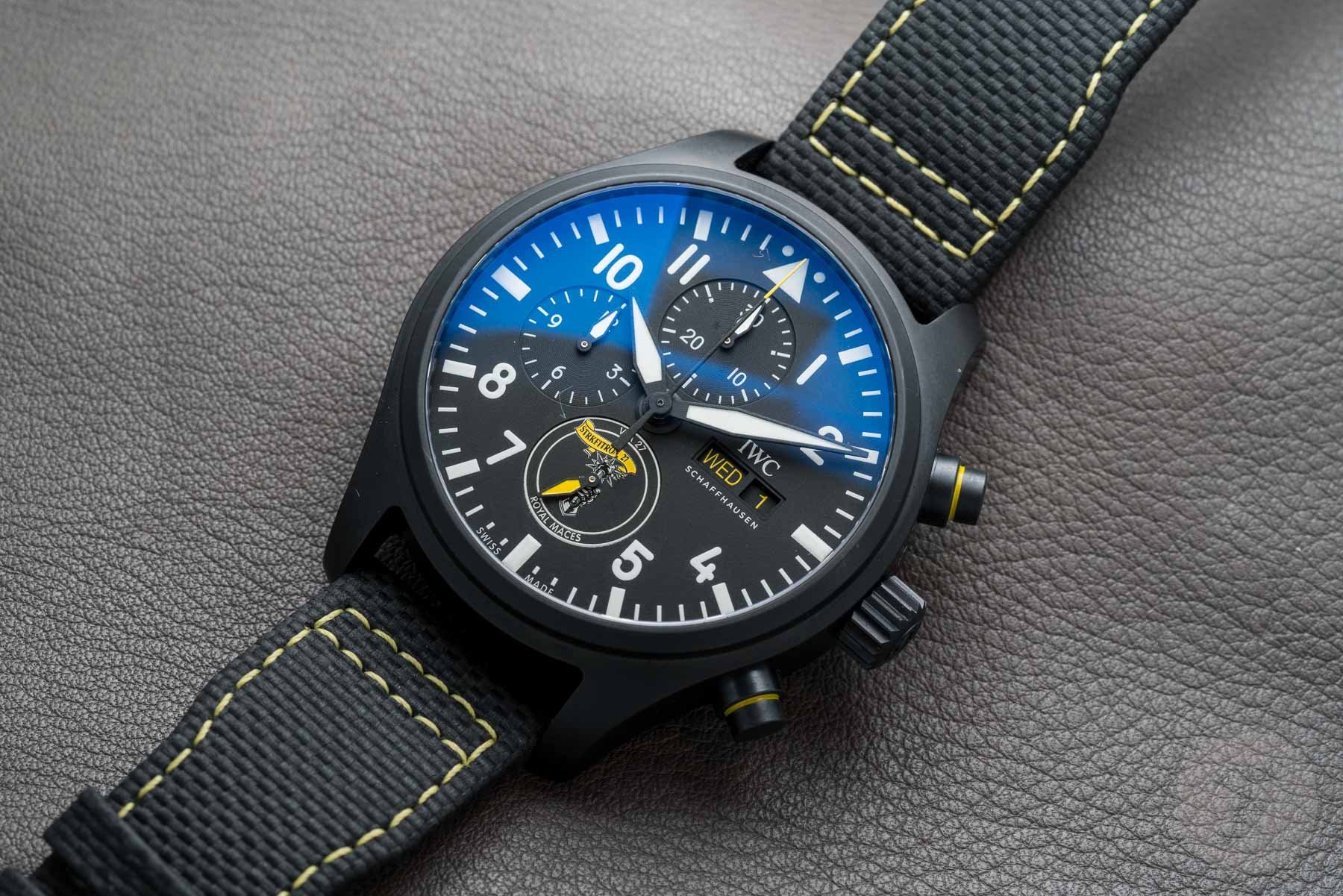IWC Launches A Triple Threat Of Pilot’s Watch Chronographs For The U.S. Navy
Constructing a watch case from ceramic is almost by-the-by these days. With Tudor entering the chat to join Panerai and Omega, forgetting who pioneered this concept is easy. The new Pilot’s Watch Chronograph by IWC serves as a reminder of the mack daddy of the ceramic game. The IWC Da Vinci reference 3755 in 1986 was the first production watch with a ceramic case. For 2021, IWC takes inspiration from its military program to give civilians a choice to cherish the elite squadrons. Namely, the U.S. Navy squadrons, “Royal Maces,” “Tophatters,” and “Blue Angels®,” with matching color accents to the logos. By delivering a one-two-three punch knockout, IWC cements its strong association with military aviation.
Limiting certain pieces to military service units is a noble way for personnel to reflect on their achievements. It must also be a special feeling knowing the watch was specifically for them without the prospect of Tom, Dick, or Harry having the same timepiece. I must stress that the new IWC Pilot’s Chronographs do not hamper this exclusive arrangement. The watches developed for the flying squadrons do have a slightly different appearance than these new civilian watches. On the dial, the insignia appears at the 9 o’clock position with no obstruction from the running seconds for the eligible pilots. The movement has a slightly different layout, with the chrono hours and minutes doubled up at the 12 o’clock sub-dial. At the 6 o’clock sub-dial, the running seconds have a graduated scale for more precise timing.
IWC Pilot’s Watch Chronograph Edition “Tophatters”
For each of the new Pilot’s Watch Chronographs for civilians, the emblem utilizes the space behind the subsidiary seconds with no scale. The chronograph hours and minutes are now in separate sub-dials, with the hours occupying the 9 o’clock position. Powering both versions is the IWC-manufactured 69380 caliber with column wheel and vertical clutch mechanism.
But I feel it necessary to note that elite pilots will still have an easily identifiable differentiation. The three limited-edition Pilot’s chronographs instead pay tribute to the distinct eras of aeronautical development.
The “Tophatters” are the oldest active aviation division in the U.S. Navy.
Let’s start with The Strike Fighter Squadron 14, nicknamed “Tophatters,” the California-based squadron formed in 1919. This early beginning makes the “Tophatters” the oldest active aviation division in the U.S. Navy. The emblematic top hat symbol reflects its namesake with a high contrast white background against the matte-black dial. And to distinguish the running seconds, the characteristic red fills the hand. This red accent corresponds to the rim of the pushers, the stitching on the leather strap, and the day and date printed in red text. Despite the modern black zirconium oxide ceramic case, I sense the “Tophatters” version emphasizes longevity with more muted colors and a padded calfskin strap. For each model, the strap uses an IWC-engraved grade 5 titanium folding buckle.
Pilot’s Watch Chronograph Edition “Blue Angels®”
Next up is possibly one of the trio’s most globally recognized flying squadrons, the “Blue Angels®.” Since forming in 1946, the “Blue Angels®” still perform aerobatic displays for spectators worldwide. I best remember the squadron flying supersonic F/A-18 Hornets in tight formations. Vibrant blue and yellow adorns the classic shape of the F/A-18 is associated with the team. Somehow, the bright livery diminishes the fighter capability the jets are also known for in other units.
This Pilot’s Chronographs envelops the signature color with a blue ceramic case to capitalize on the paint scheme. The ceramic compound is infused with blue metallic oxides to achieve this hue. We previously saw this material with the Laureus Sport for Good Pilot’s Mark XVIII that Mike covered here. I will echo Mike’s thoughts that the matte blue ceramic case resembles a plastic resin.
The functional look of the matte blue surfaces work well with the bold yellow accents.
But in the 44.5mm diameter case, the functional look of the matte blue surfaces work well with the bold full-length yellow central chrono seconds. Where there is also a benefit of ceramic is the high tolerance against scratches. The lightness of the material also allows the 15.7mm case depth to wear smaller than the size suggests. As with the black “Tophatters” chronograph above, the pushers and screw-down crown are Ceratanium®. This IWC proprietary compound combines the scratch-resistance of ceramic with the shatter-proof ability of titanium. This combination looks great on the black ceramic “Tophatters” and “Royal Maces.” But the dark grey Ceratanium® is quite jarring against the blue ceramic case on the “Blue Angels®,” even with the touch of yellow on the pushers. The blue textile-inlaid rubber strap sits nicely in the 21mm lug width to appear more technical.
Pilot’s Watch Chronograph Edition “Royal Maces”
Lastly, and as promised, is the “Royal Maces” squadron timepiece. The “Royal Maces” began operation during the Vietnam War in 1967 and still station themselves on the southern tip of Japan near Hiroshima. As with the “Blue Angels®,” the watch has similar yellow accents on the day/date wheels and pushers. Although, as with the “Tophatters,” it is only the tip of the chronograph seconds hand coated in yellow.
The case-back is made of grade 5 titanium to match the buckle. While the other two models have a variation of the dial emblem to the case-back, the “Royal Maces” model has a deep-set engraving of the F/A-18E Super Hornet that it currently uses in active engagement.
These new Pilot’s Watch Chronographs mix ceramic, grade 5 titanium, and Ceratanium®.
It’s an attractive jet silhouette, but the “Royal Maces” is my favorite emblem of the three. The aggressive fist clenching the medieval mace reflects the strike capability of the flying outfit and would’ve been cool to see twice. Between ceramic, titanium, and Ceratanium®, the Pilot’s Watch Chronographs have a distinct mix of materials. To add to this is the soft iron inner cage that protects the movement from magnetism up to at least 1,000 gauss. This inner case does prevent case-back opening from viewing the IWC-manufactured 69380 caliber. But the engravings more than make up for it. The sapphire glass also withstands sudden drops in pressure and doming has an anti-reflective coating on both sides. The textile strap has yellow stitching and leather padding to protect the pinholes from fraying.
Final flying thoughts
Of the triplets, the “Blue Angels®” is the standout for me. Not only is the squadron far more recognizable, but the blue ceramic case also sets it apart. I agree with Mike that the Laureus Sport for Good was just too blue. Somehow, adding in the yellow accents and the sqaudron’s crest breaks up the sea of blue on the “Blue Angels®.” I will say, we have quite a glut of chronographs on the market right now. Not that these are not welcome, but it would be good to see IWC mix it up with some straightforward GMT or pilot-orientated complications.
Even so, these military Pilot’s Watch Chronographs embody the best of both worlds for IWC — modern technology with classic pilot styling. Each watch is limited to 500 pieces at a price of €12,000. You can find out more about the watches on the IWC website here.

